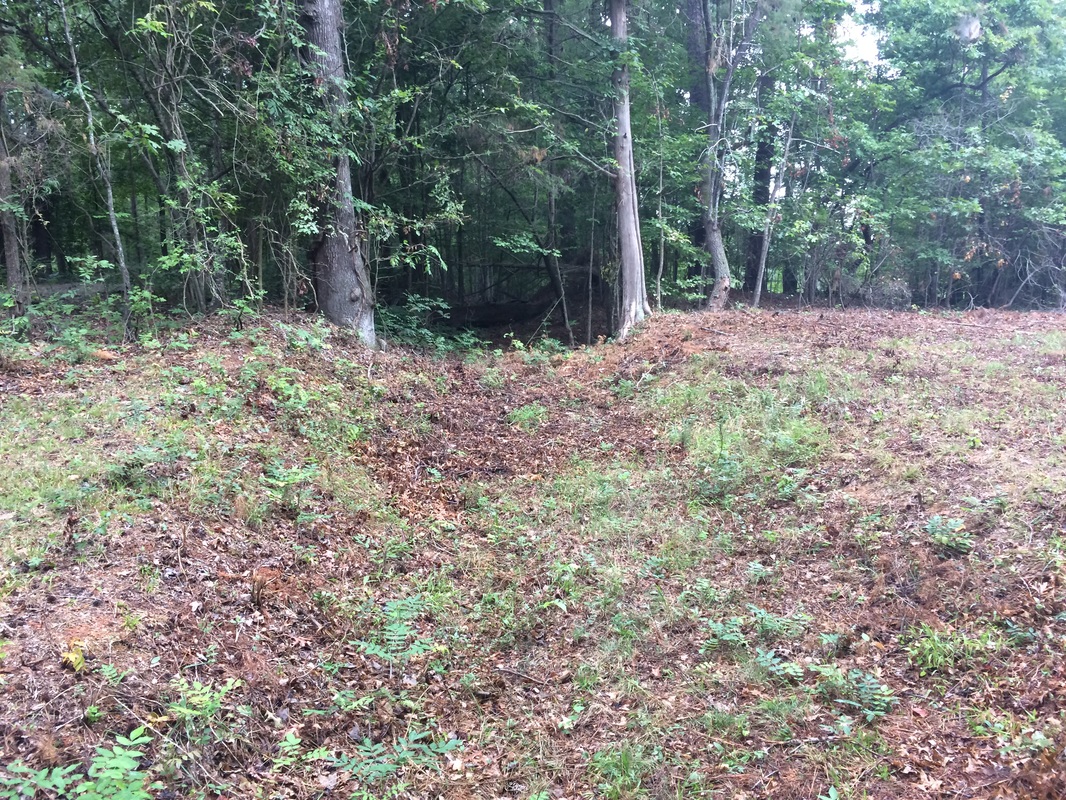 Christopher Jacques: Hero of the Lawson Trek.
Christopher Jacques: Hero of the Lawson Trek. "The next day, we went over several Tracts of rich Land, but mix'd with Pines and other indifferent Soil. In our way, there stood a great Stone about the Size of a large Oven, and hollow; this the Indians took great Notice of, putting some Tobacco into the Concavity, and spitting after it. I ask'd them the reason of their so doing, but they made me no Answer."
Given which, when you find that your path takes you by the Hollow Rock Racquet & Swim Club in western Durham, you have to feel like you're on the right track. Not that I found this by myself, mind you; my ever trustworthy guide Val Green sent me looking for the rock, which he's found himself, and when I couldn't get exact directions I did what any reporter would do: I reached out to the club.
Within a day or two I had heard from activities and camp director Christopher Jacques, who told me that his query caused a nameless board member to go on a quest he'd meant to make for five years: "namely, where is the actual Hollow Rock," the member said. Well, not far off, as it happens. Just down Erwin Road from the club you follow a private drive up to the New Hope Creek, which runs along a seam of granite on its south side, the creek a good ten feet or more below the gravel road above. In the side of that outcropping that is almost a cliff, beneath the lichens and the mosses, are many large expressions of granite, and in some of them you find little potholes -- rendering the stone hollow, just as Lawson said.
Potholes in granite on the top are easy to understand -- rain collects in low places, begins to erode the rock, whether because of acids in the water or the action of freezing and cooling. That makes the depression deeper and soon you have a pothole; in rivers or areas that food the flow of water, swirling around sediment that scours the hole, makes the pothole even deeper.
What makes a pothole in the side of a rock I have no idea; I'll check with a geologist and get back to you.
Anyhow, along the way from Hillsborough to western Durham, Lawson followed what Tom Magnuson of the Trading Path Association called "the old central coast road -- it goes all the way from the mountains to the sea." Magnuson doubts that Lawson ever actually made it to Hillsborough, mind you -- he believes he stopped somewhat short of there and didn't cross the Eno until days later -- but from that area to the Indian settlement Lawson called Adshusheer, the central coast road was the way. That road turned into Old NC 10, which I walked along towards the Hollow Rocks.
Magnuson, already generous with his time, became a true Hero of the Lawson Trek by taking me on a driving tour of the area, stopping here and there to show me spots where fragments of the old road still exist. I loved seeing them -- you can usually tell because there are berms to the side, showing where road builders dug to maintain slope, which Magnuson links back to the English Highways Act of 1555, which first organized highway cost and maintenance as an obligation of the population.
The other thing I deeply loved was Lawson's note that the Indians just refused to answer his question. "Hey, you guys -- why'd you spit in that rock, huh? What's the deal with the tobacco, too?" No answer. Shut up, tourist -- not everything is your business. Anybody who's ever been a reporter or interviewed anybody for any reason at all recognizes this interaction. No matter how helpful people are, after a while even the nicest and most patient just get sick of you. Lawson had been following Indian guides for nearly two months, and though he went from guide to guide, one can easily imagine they were getting sick of his questions.
So as I stood at the hollow rocks, because of the patient, generous help of countless people answering constant questions, I took a moment of pure gratitude. Lawson never mentioned it, but I suspect that when he noted for one of the very few times in his book that someone refused to answer one of his questions, he took a moment to reflect on how grateful he was that mostly they did answer him.
I know I did.






 RSS Feed
RSS Feed